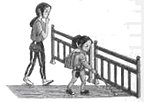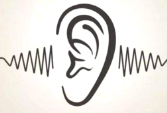Welcome to Holker Hall & Gardens
Visitor Information | How to Get to Holker | By Car: Follow brown signs on A590 from J36, M6. Approximate travel times: Windermere — 20 minutes, Kendal — 25 minutes, Lancaster — 45 minutes, Manchester— 1 hour 30 minutes. | |
Opening Times | Sunday-Friday (closed on Saturday) 11:00 am-4:00pm, 30th March-2nd November. | ||
Admission Charges | Hall & Gardens | Gardens | |
Adults | £12.00 per person | £8.00 per person | |
Groups | £9.00 per person | £5.50 per person | |
Special Events | Producers’ Market 13th April | Join us to taste different fresh local food and drinks. Meet the producers and get some excellent cook ideas. | |
Holker Garden Festival 30th May | The event celebrates its 22nd anniversary with a great show of the very best of gardening, making it one of the most popular events in gardening. | ||
National Garden Day 28th August | Holker once again opens its gardens to help the poor. For just a small donation you can take a tour with our garden guide. | ||
Winter Market 8th November | This is an event for all the family. Walk around among different shops selling gifts while enjoying a live music show and nice street entertainment. |
1.How long does it probably take a tourist to drive to Holker from Manchester?
A.20 minutes. B.25 minutes. C.45 minutes. D.90 minutes.
2.How much should a member of a tour group pay to visit Hall & Gardens?
A.£9.00. B.£12.00. C.£8.00. D.£5.50.
3.Which event will you go to if you want to see a live music show?
A.Producers’ Market. B.Holker Garden Festival.
C.National Garden Day. D.Winter Market.
4.When may Lucy go to visit Hall & Gardens?
A.On Saturday B.On December 25
C.At 1:00 p.m. 28th August D.At 4:30 p.m. on 13th April
5.Which part of a newspaper may this passage be taken from?
A.Science Study B.Travel C.Sports World D.Art

An 11-year-old blind girl is proud of walking alone every day to and from school. Why? She has to walk past so many barriers (障碍物) in her way. The girl's home is near the school, yet her mother follows her without letting her know.
The case of the girl shows the barrier-free(障碍物) facilities (设施) are not enough in her city. Many other cities are short of barrier-free facilities as well. There's no well-designed path for the blind. In fact. in the early 2000s, some cities started to build barrier-free facilities for disabled people. However, almost 20 years later, only a few large cities have had facilities of high quality.
It's common that sidewalks are taken up with barriers. Few workers are sent to move them away, so it's dangerous for the blind to walk on them. Also, some other barrier-free facilities are badly destroyed(毁坏). Only a few workers are assigned (分配) to do the task of repairing the broken ones.
Some ideas can make a difference — build more barrier-free facilities, employ(雇用) more of workers and require money. In a word, more money is needed to carry on with the work. It’s our duty to make life easy for disabled people, so that they can live without barriers some day.
阅读以上信息, 用恰当的单词完成下面的表格, 每空一词。
Introduction | A blind girl feels proud that she walks to and from school by 1. every day. To be sure of her daughter safe, the mother always follows her and keeps it 2.. |
3. | Barrier-free facilities are not enough, neither are the workers. About facilities Twenty years ago, some barrier-free facilities were 4. . Now, most cities are short of facilities of high quality 5. several large cities. About workers Barriers on sidewalks aren’t moved away in time, so it’s dangerous for the blind to walk on 6.. 7. facilities aren’t repaired sometimes. |
Ideas | To make the life of disabled people as 8. as common people, more money is needed to 9. the work . Build more barrier-free facilities. Employ 10. workers to protect them. |


